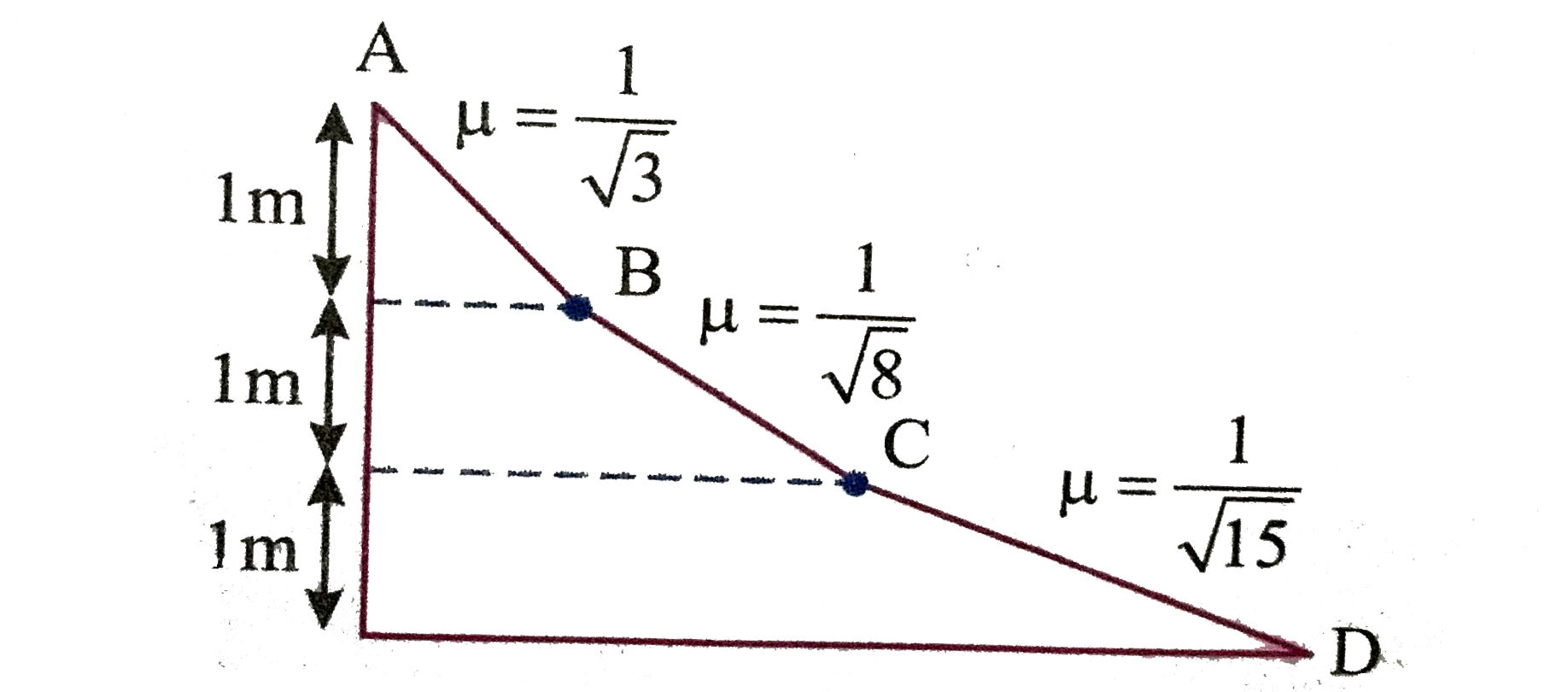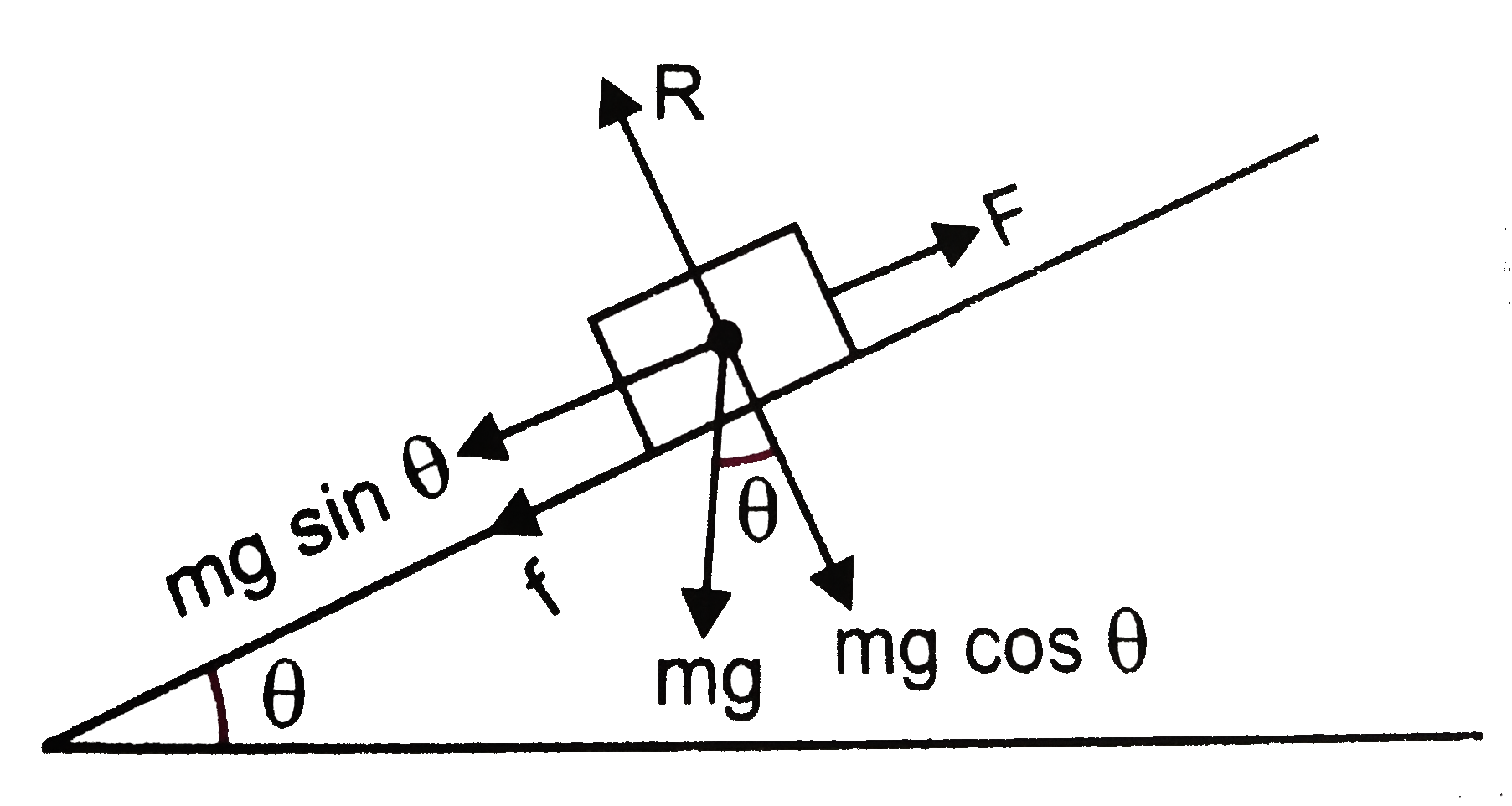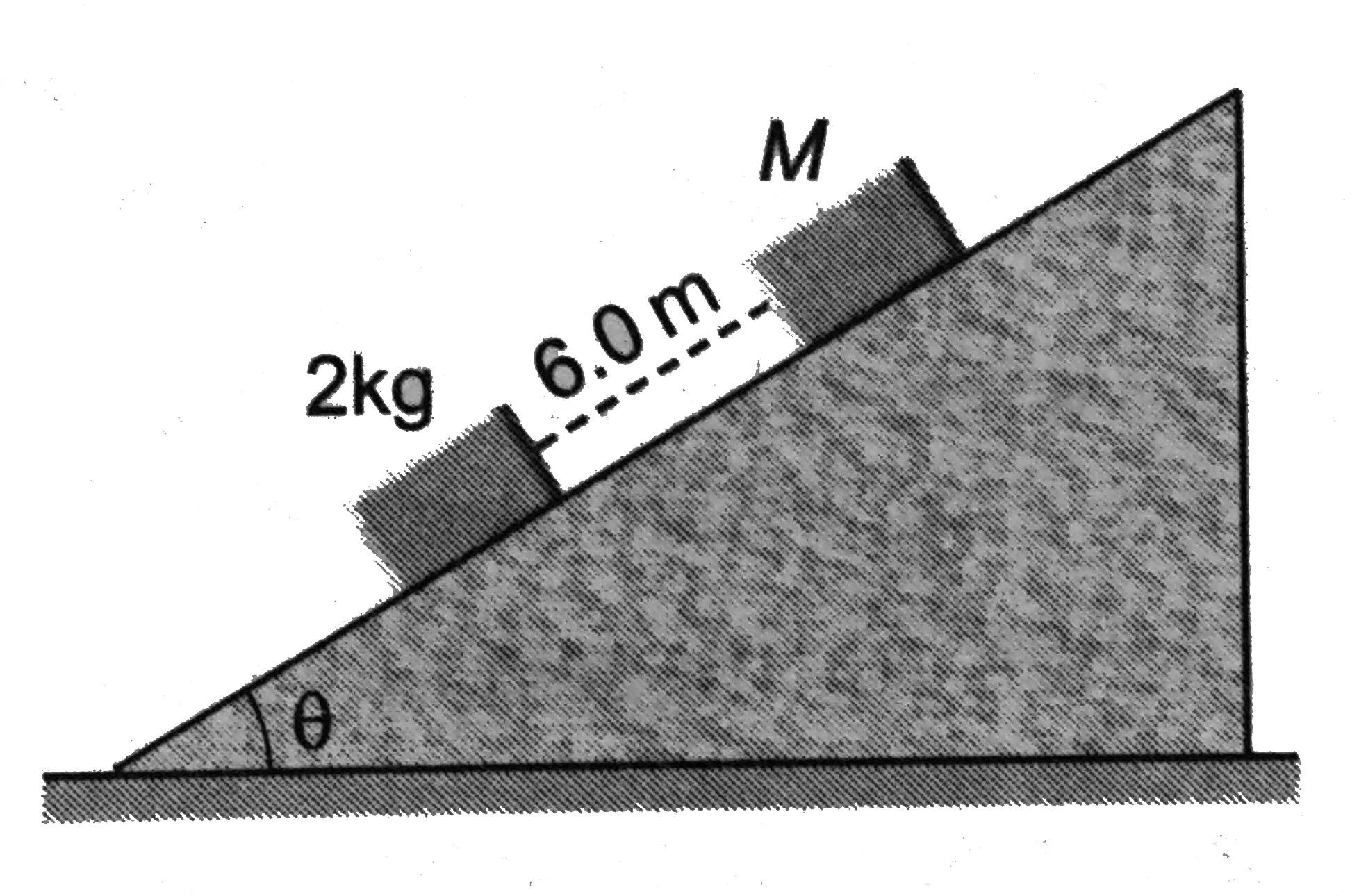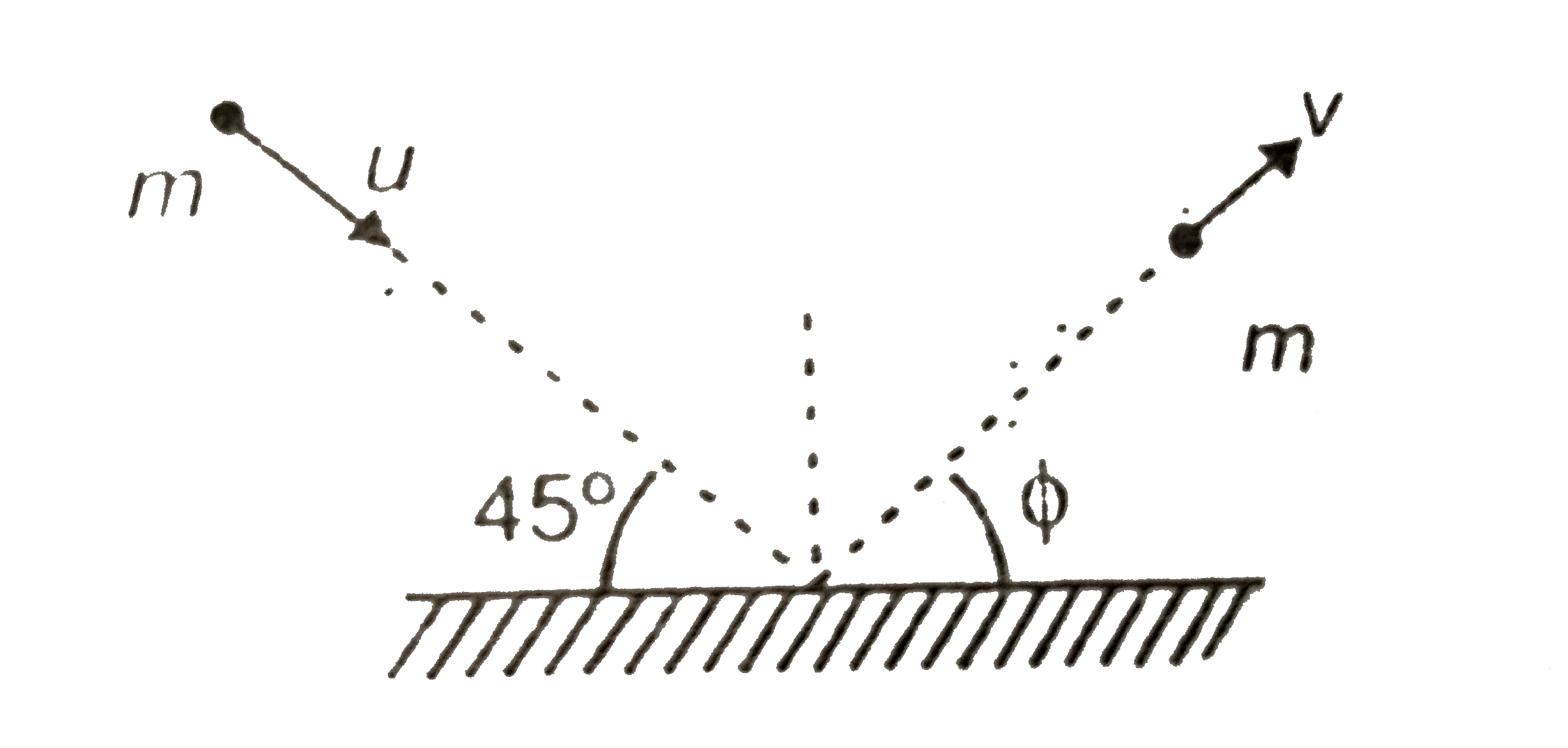A composite inclined plane has three different inclined surfaces AB,BC and CD of heights 1m each and coefficients of friction 1√3,1√8 and 1√15 respectively. A particle given an initial velocity at A along AB transverses the inclined surfaces with uniform speed, reaches D in 5s. The initial speed given is (inm/s)

1.6
1.8
2.4
3
The correct Answer is:B
We know that if the angle of inclination is tan−1μ no resultant force acts on the body . ∴ AB=1sin(tan−1(1)√3)=2m
BC=1sin(tan−1(1)√8)=3m
CD = 1sin(tan−1(1)√15)=4m
∴ ABCD = 9m , T = 5 s , v = 1.8 m/s
Topper's Solved these Questions
- FRICTION AND CIRCULAR MOTION BOOK - GRB PUBLICATIONCHAPTER - FRICTION AND CIRCULAR MOTION EXERCISE - More than one correct
18 Videos
- FRICTION AND CIRCULAR MOTION BOOK - GRB PUBLICATIONCHAPTER - FRICTION AND CIRCULAR MOTION EXERCISE - Assertion - Reason
12 Videos
- FRICTION AND CIRCULAR MOTION BOOK - GRB PUBLICATIONCHAPTER - FRICTION AND CIRCULAR MOTION EXERCISE - Problem For Practice
23 Videos
- FORCE AND NEWTONS LAWS OF MOTIONBOOK - GRB PUBLICATIONCHAPTER - FORCE AND NEWTONS LAWS OF MOTIONEXERCISE - Comprehension
12 Videos
- MOTION IN A STRAIGHT LINEBOOK - GRB PUBLICATIONCHAPTER - MOTION IN A STRAIGHT LINEEXERCISE - Comprehension type Queston
14 Videos
Similar Questions
A body of mass 10 kg is placed on an inclined surface of angle 30∘ . If coefficient of limiting friction is 1/√3 , find the inclined plane. Force is being exerted parallel to the inclined plane
 .
.
View SolutionTwo blocks of masses 2kg and M are at rest on an inclined plane and are separated by a distance of 6.0m as shown. The coefficient of friction between each block and the inclined plane is 0.25. The 2kg block is given a velocity of 10.0m/s up the inclined plane. It collides with M, comes back and has a velocity of 1.0m/s when it reaches its initial position. The other block M after the collision moves 0.5m up and comes to rest. Calculate the coefficient of restitution between the blocks and the mass of the block M.
[Take sinθ=tanθ=0.05 and g=10m/s2]

View Solution
Knowledge Check
A cubical block rests on an inclined plane of coefficient of friction μ=1√3 . What should be the angle of inclination so that the block just slides down the inclined plane?
A30∘B60∘C45∘D90∘Five particles have speeds 1, 2, 3, 4, 5 m/s. The average velocity of the particles is (in m/s)
A3B0C2.5Ddata insufficientA particle is moving with uniform speed 0.5m/s along a circle of radius 1m then the angular velocity of particle is (in rads−1)
A2B1.5C1D0.5
An engine of one metric ton is going up an inclined plane of slope 1 in 2 at the rate of 36kmh−1 If the coefficient of friction is 1/√3 calculate the power of the engine in k W .
View SolutionA particle of mass m moving with a speed u strikes a smooth horizontal surface at an angle 45∘. The particle rebounds at an angle ϕ with speed v. If coefficient of restituion is 1√3, then angle ϕ is

View SolutionA solid sphere of diameter 0.1 m and 5 kg is rolling down an inclined plane with a speed of 4 m/s. The total kinetic energy of the sphere is :
View SolutionA particle moving in a straight in a straight line has velocity and displacement equation as
v=4√1+s,
where v is in m/s and s is in m. The initial velocity of the particle is:
View SolutionA projectile is given an initial velocity of (ˆi+√3ˆj) m/s, where ˆi is along the ground and ˆj is along the vertical. Then, the equation of the path of projectile is [ Take g =10 m/s2]
View Solution
